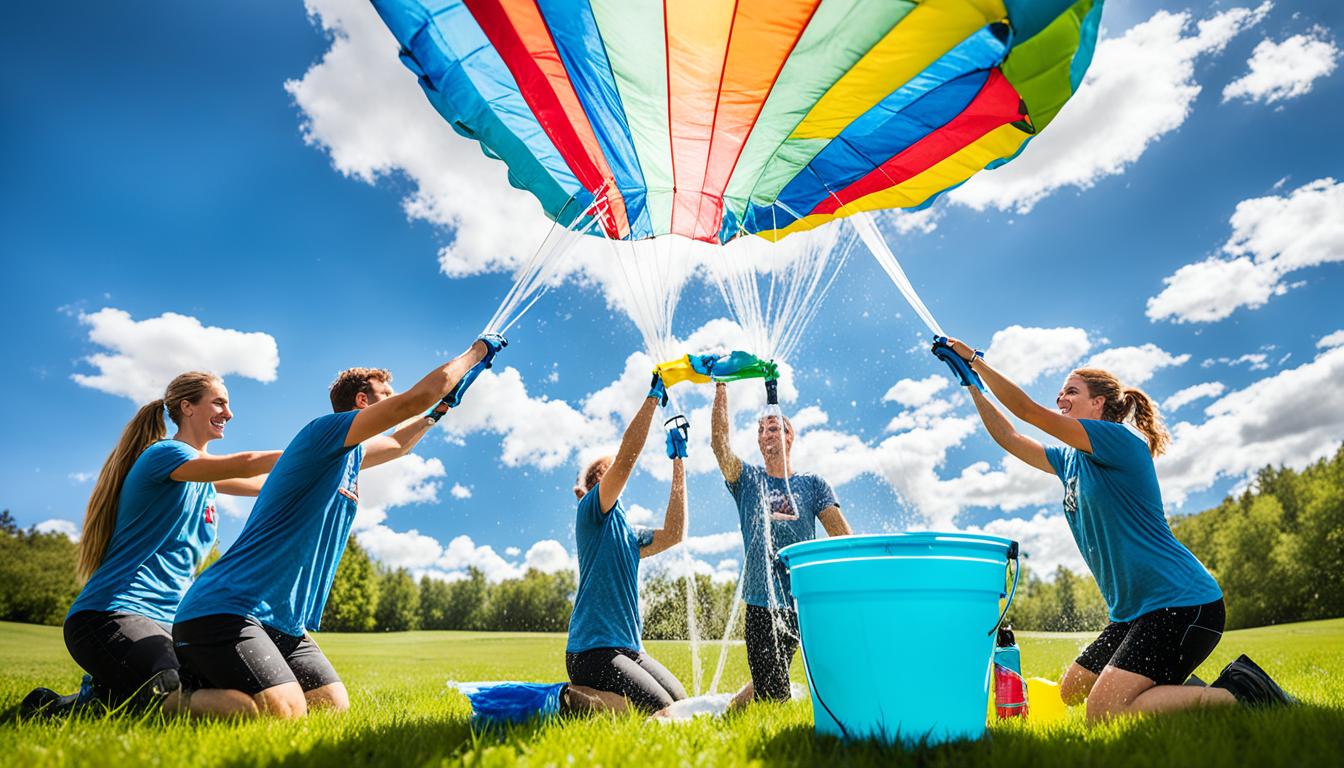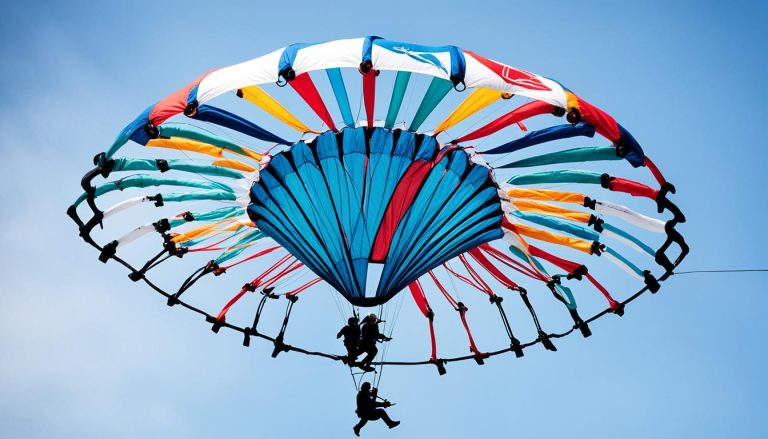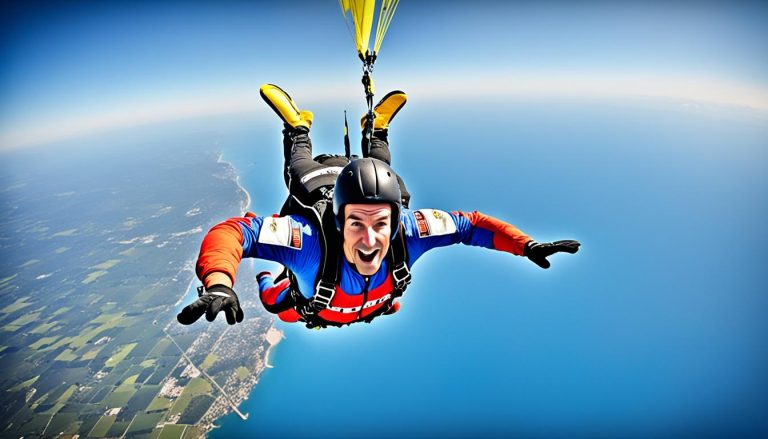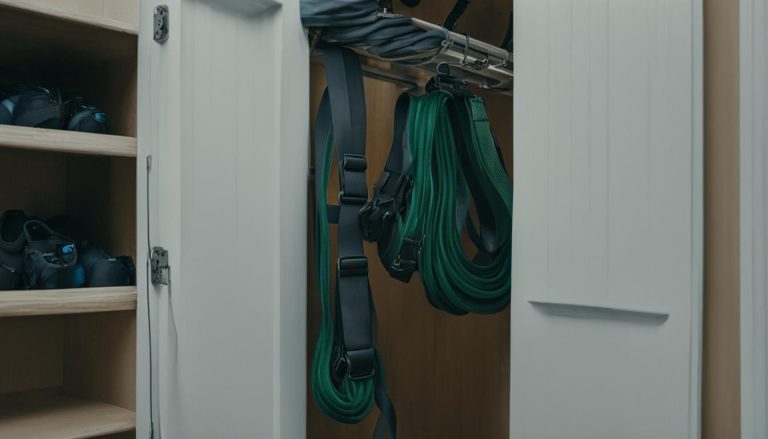How to Care for Your Parachuting Gear
Proper maintenance is crucial for ensuring the longevity and performance of your parachuting gear. Whether you’re a seasoned skydiver or just starting out, taking care of your parachute equipment is essential for a safe and enjoyable experience. In this guide, we will explore the best practices for parachute gear care, including maintenance, cleaning, and avoiding wear and tear.
Cleaning Your Parachuting Gear
Cleaning your parachute gear is an important part of gear maintenance. To ensure thorough cleaning without compromising the integrity of the gear, follow these parachute gear cleaning tips:
- Step 1: Start by removing any dirt, debris, or mud from the exterior of your gear. Use a soft brush or cloth to gently scrub away any accumulated dirt.
- Step 2: Fill a basin or large container with lukewarm water and a mild detergent specifically designed for parachute gear. Avoid using harsh chemicals or bleach, as they can damage the fabric.
- Step 3: Immerse the gear in the soapy water and agitate it gently to loosen any dirt or stains. Pay extra attention to areas that are prone to getting dirty, such as the bottom of the container or the harness straps.
- Step 4: Rinse the gear thoroughly with clean water to remove any soap residue. Ensure that all soap is adequately rinsed off to prevent any skin irritation or fabric damage.
- Step 5: Hang the gear to dry in a well-ventilated area, away from direct sunlight or heat sources. Avoid using a clothes dryer, as the heat can shrink or damage the fabric.
- Step 6: Once the gear is completely dry, inspect it carefully for any signs of wear, tear, or damage. Check the stitching, webbing, and buckles to ensure everything is in proper working condition.
Regularly cleaning your parachute gear not only keeps it looking fresh, but it also helps maintain its performance and extends its lifespan. By following these cleaning tips, you can keep your skydiving equipment in optimal condition for safe and enjoyable jumps.
“Regularly cleaning your parachute gear not only keeps it looking fresh, but it also helps maintain its performance and extends its lifespan.”
Avoiding Ground Wear and Tear
The ground is a prime area where parachute gear can experience significant wear and tear. To protect your gear and maximize its lifespan, it’s crucial to take precautions and minimize ground damage.
Avoid dragging your gear across grass, dirt, or concrete, as this can expedite its deterioration. Instead, consider carrying or lifting the gear whenever possible, especially when navigating rough or abrasive surfaces.
During the packing process, it’s important to be mindful of the gear’s contact with the ground. Avoid pulling the container towards you, as this can lead to direct contact between the gear and the ground. Instead, focus on moving the deployment bag forward to prevent unnecessary wear and tear.
After landing, when gathering and handling the parachute, practice proper technique. to minimize dragging. As you walk towards the parachute, make sure to loop or daisy chain the lines, keeping them off the ground to avoid unnecessary friction and damage.
Additionally, pay attention to the break lines and avoid twists when handling your gear, as these can contribute to premature wear or tension knots. Maintaining proper line management and ensuring the lines are free from tangles and twists can prolong the life of your parachute gear.
Taking these precautions to minimize ground contact and protect your gear from unnecessary wear and tear will help ensure its longevity and performance during future jumps.
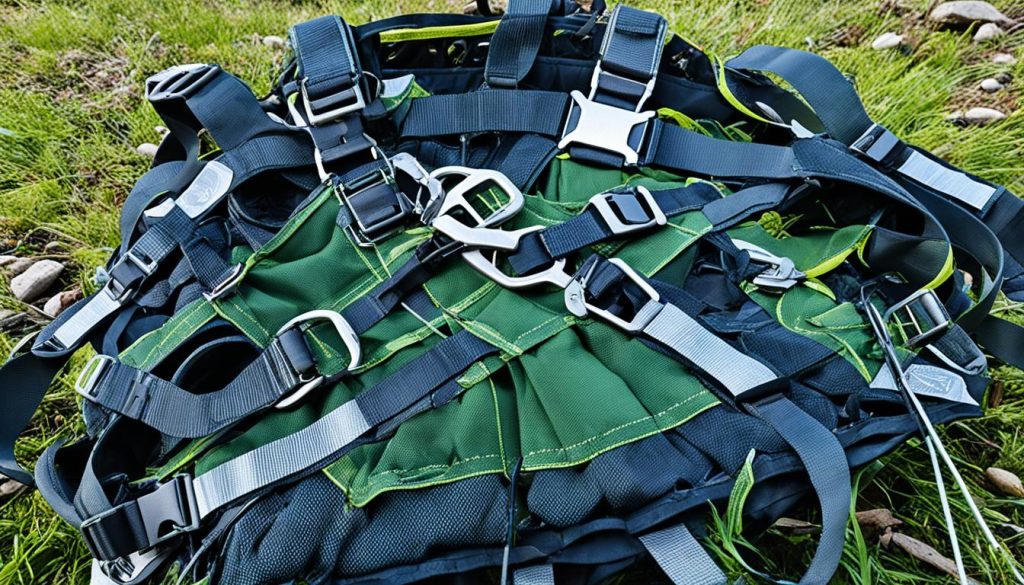
Protecting Your Gear from Sun Damage
Extended exposure to the sun can cause significant damage to your skydiving gear, particularly fabric weakening. It is important to minimize direct sunlight exposure to the gear whenever possible.
After landing, aim to move your gear into the shade as quickly as possible to prevent sun damage. Similarly, when packing, choose a location with full shade to protect the gear during the process.
Applying Scotchgard to the fabric after cleaning and drying can also offer additional protection.
Pro Tip: Regularly inspecting your gear and promptly addressing any issues can help prevent further damage caused by sun exposure.
By taking the necessary precautions to protect your gear from the sun, you can ensure its longevity and prolong its performance.
Conclusion
Proactively caring for your parachuting gear is essential for maintaining its performance, safety, and longevity. By following best practices and establishing a regular maintenance routine, you can ensure that your gear remains in optimal condition for your skydiving adventures.
Regular cleaning is a crucial part of gear care. Clean your parachute gear thoroughly, following the manufacturer’s guidelines, to remove dirt, debris, and sweat buildup that can compromise its integrity. Inspecting your gear regularly for any signs of wear or damage is equally important. Pay close attention to cables, pilot chutes, and line-sets, as well as the overall condition of the fabric and stitching.
Consulting with professionals such as riggers can provide valuable insights and guidance specific to your equipment. They can help you determine the appropriate maintenance schedule and identify any repairs or replacements that may be necessary. Following their recommendations and adhering to manufacturer guidelines will ensure that your gear is well-maintained and ready for each jump.
Additionally, taking precautions to minimize ground wear and tear and protect your gear from sun damage is essential. Avoid dragging your gear on rough surfaces and store it in a shaded area to reduce exposure to harmful UV rays. By maintaining a proactive approach to gear care and prioritizing regular maintenance, you can enjoy many safe and thrilling skydiving experiences with the confidence that your gear is in optimal condition.

